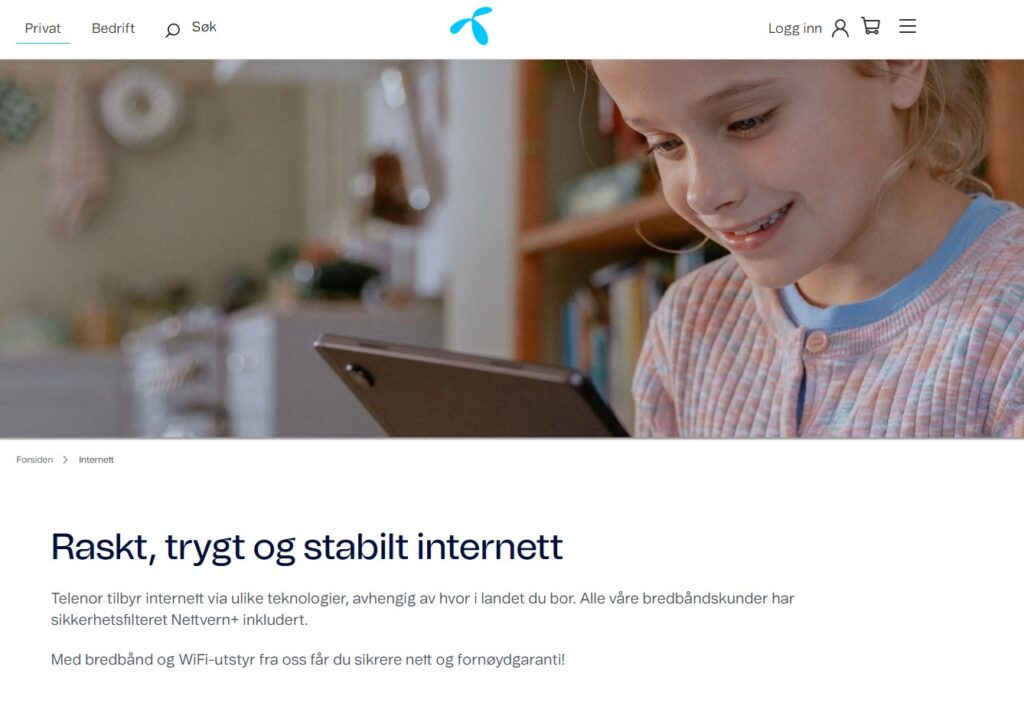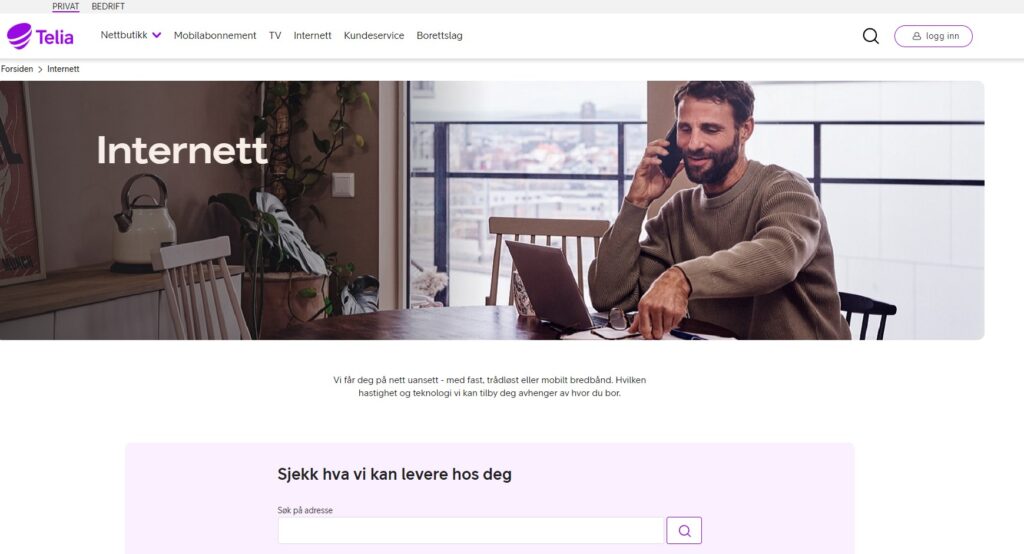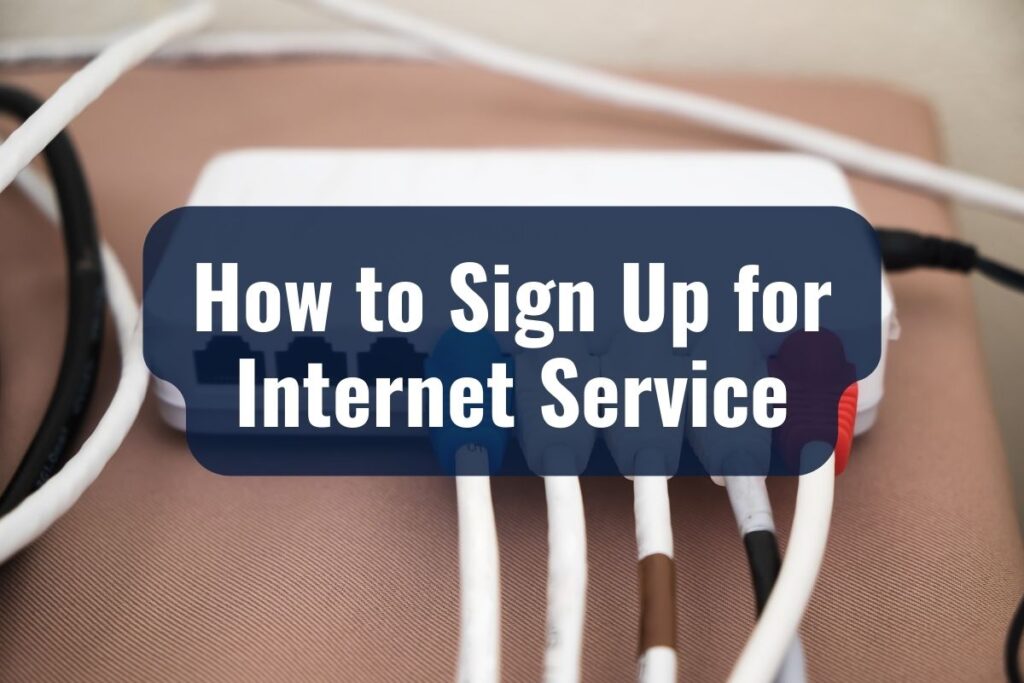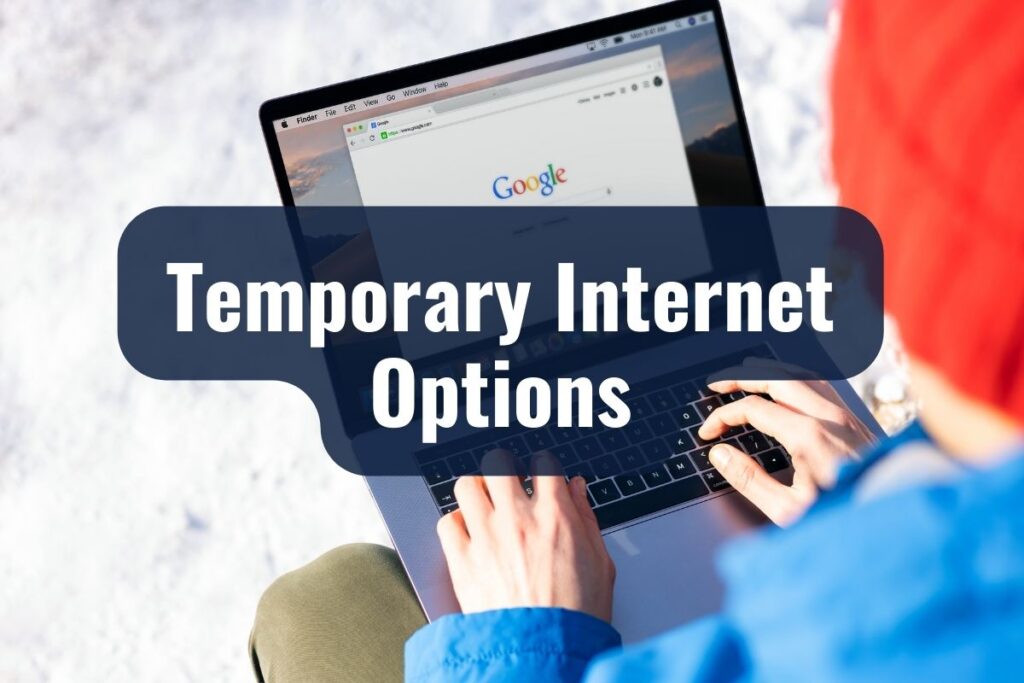Living in Norway brings a host of unique experiences, from witnessing the Northern Lights to enjoying world-class healthcare.
But to truly make the most out of your time in this Scandinavian country, you’ll want to stay connected, both to loved ones and to the rest of the world. A critical step in achieving this is securing a reliable Internet connection.
Stay Connected in Norway with Ice Mobile Broadband!
Ice.no offers the best mobile broadband for expats in Norway, quick, secure, and reliable. Enjoy fast internet with stable coverage, perfect for your dynamic lifestyle.
Plus, with Data Rollover, you never lose unused data. It’s hassle-free – no technician needed, just plug in and go.
Ideal for Norway’s expats
In a country where much of daily life—from banking and shopping to social interactions—is conducted online, your Internet service becomes as essential as any other utility.
This article aims to guide you through the process of selecting an Internet service provider (ISP) that best fits your needs. We’ll cover the types of Internet services available, the most reliable Internet providers in Norway, and the factors to consider when choosing one.
Key Takeaways
- Norway offers a range of Internet services including DSL, cable, and fiber-optic.
- Essential factors to consider when choosing a provider include speed, reliability, and customer service.
- Major providers include Telenor, Telia, and Get, each with its pros and cons.
- Signing up requires valid identification, proof of address, and usually a Norwegian bank account.
- Additional packages like TV bundles or student discounts can offer value but complicate billing.
- For short-term needs, options like prepaid hotspots and day passes are available.
Types of Internet Services in Norway
Before diving into comparisons of individual providers, it’s beneficial to understand the different types of Internet services available. Knowing your options can help you make a more informed choice.
DSL (Digital Subscriber Line)
DSL is one of the older forms of broadband technology but remains popular due to its wide availability and generally lower cost.
Speed: Typically between 1-20 Mbps
Coverage: Available in most areas, even rural ones
Suitability: Good for basic browsing, emails, and low-quality streaming
Cable Internet
Cable Internet is delivered via the same coaxial cables that provide cable television, making it convenient if you’re considering bundling your services.
Speed: Varies, but usually between 20-100 Mbps
Coverage: Mostly in urban and suburban areas
Suitability: Good for streaming, online gaming, and heavier Internet usage
Fiber-optic Internet
Fiber-optic technology offers the fastest and most reliable Internet service but is often more expensive and less widely available.
Speed: Can go up to 1000 Mbps (1 Gbps)
Coverage: Mostly in larger cities and newly developed residential areas
Suitability: Excellent for high-quality streaming, multiple devices, and professional needs like video conferencing
Satellite Internet
Satellite Internet is a last-resort option mainly for those in remote locations where other types of services are not available.
Speed: Usually between 5-25 Mbps
Coverage: Almost anywhere, as long as you have a view of the sky
Suitability: Basic browsing and emails, not recommended for streaming or gaming due to high latency
| Service Type | Speed Range | Coverage | Typical Installation Time | Ideal For |
| DSL | 10-100 Mbps | Available in most areas, even rural ones | 1-5 business days | Small households, basic tasks |
| Cable | 50-500 Mbps | Mostly in urban and suburban areas | 1-5 business days | Larger households, streaming |
| Fiber-optic | 100-1000 Mbps | Mostly in larger cities and newly developed residential areas | Up to 2 weeks | Heavy usage, multiple devices |
| Satellite | 10-100 Mbps | Almost anywhere, as long as you have a view of the sky | Within a week | Rural areas, limited options |
Factors to Consider When Choosing an Internet Provider

There are several key factors you’ll want to consider to ensure that you’re making the most practical and beneficial choice for your lifestyle. Here’s what to keep in mind.
Speed
Internet speed is often the first thing people think of, and for good reason. The speed you need will depend on your intended usage.
- Basic Browsing and Emails: 1-5 Mbps
- Streaming and Social Media: 15-25 Mbps
- Online Gaming and HD Streaming: 50-100 Mbps
- Multiple Users and Devices: 100+ Mbps
Reliability
An Internet service is only as good as its reliability. Research or ask about the uptime guarantees of the service providers you’re considering. Interruptions in service can be more than just a minor inconvenience, especially if you work or study from home.
Cost
Internet services in Norway can range from affordable to expensive, depending on what you’re looking for.
- Initial Costs: Installation fees, equipment costs, or any upfront payments
- Monthly Fees: Cost of the plan itself, additional fees for extra services, or going over data limits
Customer Service
Don’t underestimate the importance of good customer service. Being able to easily contact your provider for troubleshooting or billing issues can make your life significantly easier. It might be useful to check customer reviews or ask for recommendations to get a sense of the service quality.
Coverage Area
Last but not least, you need to confirm that the service you’re considering is available in your area. Urban residents usually have multiple options, but those in rural or newly developed areas may be limited in their choices.
Top Internet Providers in Norway
In this section, we’ll explore the top Internet service providers in Norway. We’ll detail the services they offer, average costs, speed ranges, coverage areas, and pros and cons to consider.
Ice

Ideal for those in remote locations, Ice.net provides mobile broadband and satellite options.
Types of Services: Mobile broadband, Satellite
Average Cost: From 200 to 600 NOK per month
Speed Ranges: 5-50 Mbps
Coverage Area: Nationwide, including remote areas
Pros
- Coverage in remote areas
- Affordable
- Good for basic needs
Cons
- Slower speeds
- Not ideal for heavy Internet usage
Telenor

One of the biggest and oldest telecommunications companies in Norway, Telenor offers a range of services from DSL to fiber-optic.
Types of Services: DSL, Cable, Fiber-optic
Average Cost: From 300 to 800 NOK per month depending on the plan
Speed Ranges: 20-500 Mbps
Coverage Area: Nationwide, including many rural areas
Pros
- Wide coverage
- Multiple service options
- Established and reliable
Cons
- May be pricier than other options
- Customer service experience varies
Telia

A strong competitor to Telenor, Telia offers robust Internet solutions with a focus on speed and reliability.
Types of Services: DSL, Cable, Fiber-optic
Average Cost: From 400 to 900 NOK per month
Speed Ranges: 25-300 Mbps
Coverage Area: Mostly urban and suburban, some rural
Pros
- Good speed options
- Relatively reliable
- Various bundle options
Cons
- Limited rural coverage
- Some plans can be expensive
NextGenTel

NextGenTel offers a balance of affordability and performance, ideal for those who want reliable service without breaking the bank.
Types of Services: DSL, Fiber-optic
Average Cost: From 300 to 700 NOK per month
Speed Ranges: 10-100 Mbps
Coverage Area: Nationwide but stronger in urban areas
Pros
- Affordable plans
- Decent speed ranges
- Good customer service
Cons
- Not the fastest options
- Some rural areas not covered
How to Sign Up for Internet Service

While the process is fairly straightforward, there are some essential points to consider. Here’s what you’ll generally need to do.
Necessary Documentation
Before you can initiate the process, make sure you have the required documents ready. Typically, you’ll need:
- Valid Identification (passport or national ID)
- Proof of Address (utility bill or rental agreement)
- Bank Details for monthly payments
Steps in the Application Process
- Contact the Provider: You can usually do this by phone, email, or through the provider’s website. Some providers have English-speaking customer service, but it’s not always guaranteed.
- Choose Your Plan: Based on your needs and the options available in your area, select a plan that’s right for you. You’ll be asked to provide the necessary documentation at this stage.
- Set an Installation Date: Once the paperwork is completed, you’ll need to set up an installation date. Some providers offer self-installation kits, while others require a professional technician to set up the service. Ensure you’re available on the installation day, as missing it could result in additional charges.
- Installation: On the day of installation, a technician (if required) will come to set up the necessary equipment. You’ll be walked through the setup and given any necessary login information.
- Payment Setup: Most providers require you to set up automatic monthly payments. This is usually done through a bank account, although some providers might accept credit card payments.
Typical Installation Time Frames
- DSL and Cable: Usually 1-5 business days after completing the paperwork.
- Fiber-optic: May take up to 2 weeks, depending on availability and your location.
- Satellite: Generally within a week, though this can vary based on weather conditions and technician availability.
Related: Top 3 Mobile Networks in Norway in 2023
Extra Services and Packages
Here’s a breakdown of some common extra services and packages you may encounter.
Bundling with TV or Phone
Many providers offer bundle packages that include Internet, TV, and sometimes even a landline phone service. Bundling can offer convenience and sometimes even cost savings compared to purchasing these services separately.
Pros
- Easier billing as you have just one bill for multiple services.
- Potential discounts when opting for a bundle.
Cons
- Not all bundle services may meet your requirements.
- Bundles can sometimes make it more complicated to switch providers later on.
Discounts for Students or Special Groups
If you’re a student, senior citizen, or part of a specific professional group, some providers offer special discounted rates.
Pros
- Cost savings.
- Sometimes bundled with other useful services like academic journals for students.
Cons
- These offers may be time-limited or subject to specific terms and conditions.
Family Packages
Some providers offer family packages that allow multiple members of a household to enjoy services like additional TV channels or higher Internet speeds at discounted rates.
Pros
- Cost-efficient for larger households.
- May include parental control features.
Cons
Family packages might offer services you don’t need, making them less cost-effective.
Add-on Services
Many providers also offer additional services that can be tacked onto your basic Internet package. These could range from cloud storage options to advanced security features.
Pros
- Customizable based on your needs.
- Often can be added or removed from your package at any time.
Cons
These services often come at an extra cost.
Temporary Internet Options

If you’re in Norway for a short period or find yourself in a situation where a long-term Internet contract isn’t feasible, there are temporary Internet solutions available. Whether you’re a student, a long-term tourist, or in the process of moving, these options can offer the flexibility you require.
Prepaid Mobile Hotspots
Prepaid mobile hotspots offer a portable and convenient way to access the Internet without any long-term commitments.
Pros
- No contract required
- Portable and convenient
Cons
- May be more expensive per data unit
- Speed and coverage might be limited
Day or Week Passes
Some providers offer day or week passes that grant you access to their broadband services for short periods. These are ideal for situations like temporary stays or as a stop-gap until your regular Internet service is installed.
Pros
- Short-term commitment
- Usually easy to set up
Cons
- Can be expensive for extended periods
- Limited in terms of speed and data allowances
Public Wi-Fi
Norway offers an array of public Wi-Fi options, particularly in urban centers, cafes, and libraries. While not ideal for heavy usage, these can be convenient for basic browsing and checking emails.
Pros
- Free or low-cost
- Widely available in urban areas
Cons
- Not secure for sensitive transactions
- Speeds can be inconsistent and slow
Tethering via Mobile Phone
If you have a local SIM card with a generous data allowance, you can use your mobile phone as a hotspot to connect to other devices.
Pros
- Convenient if you already have a mobile plan
- Can be fast, depending on your mobile network
Cons
- Drains mobile phone battery quickly
- Not ideal for multiple devices or heavy usage
Related: New To Norway: Embracing Life in Norway
Additional Resources
- Nkom – Norwegian Communications Authority (Nkom) provides reliable information on regulations, consumer rights, and the overall telecommunications landscape.
- FAST – Testing your Internet speed can be done through various online platforms. These tests can give you a real-world understanding of whether your Internet service is delivering the promised speeds.
FAQs
Can I Get English Customer Support?
While Norway is a country where most people speak English, not all service providers offer customer support in English. Telenor and Telia often have English-speaking customer service representatives, but it’s not guaranteed with smaller providers.
Is Unlimited Data Really Unlimited?
Plans that advertise ‘unlimited data’ often come with fair usage policies, which means that your speeds may be throttled after you reach a certain data limit. Make sure to read the fine print to understand the conditions.
How Long Does Installation Usually Take?
The time frame for installation varies by provider and service type:
1. DSL and Cable: 1-5 business days
2. Fiber-optic: Up to 2 weeks
3. Satellite: Within a week
Do I Need a Norwegian Bank Account to Pay My Bill?
Most providers require a Norwegian bank account for monthly automatic payments, although some might accept international credit cards. Check with the provider to know what payment methods are accepted.
What Happens If I Move?
If you move to a new address, most providers offer a service to transfer your current package to your new residence. This might be subject to availability in the new area and could involve additional fees.
Can I Cancel My Contract Early?
Early cancellation is generally possible but often incurs a fee. The specifics will be outlined in your contract, so be sure to read it carefully.
Are There Special Plans for Students?
Yes, several providers offer student discounts or special packages tailored to academic needs, which may include access to academic journals or software suites at a reduced rate.
Is a Router Included or Do I Need to Buy One?
Most providers offer the option to rent a router for a monthly fee or allow you to purchase one upfront. Some plans may include a router at no extra cost as part of a promotional deal.


